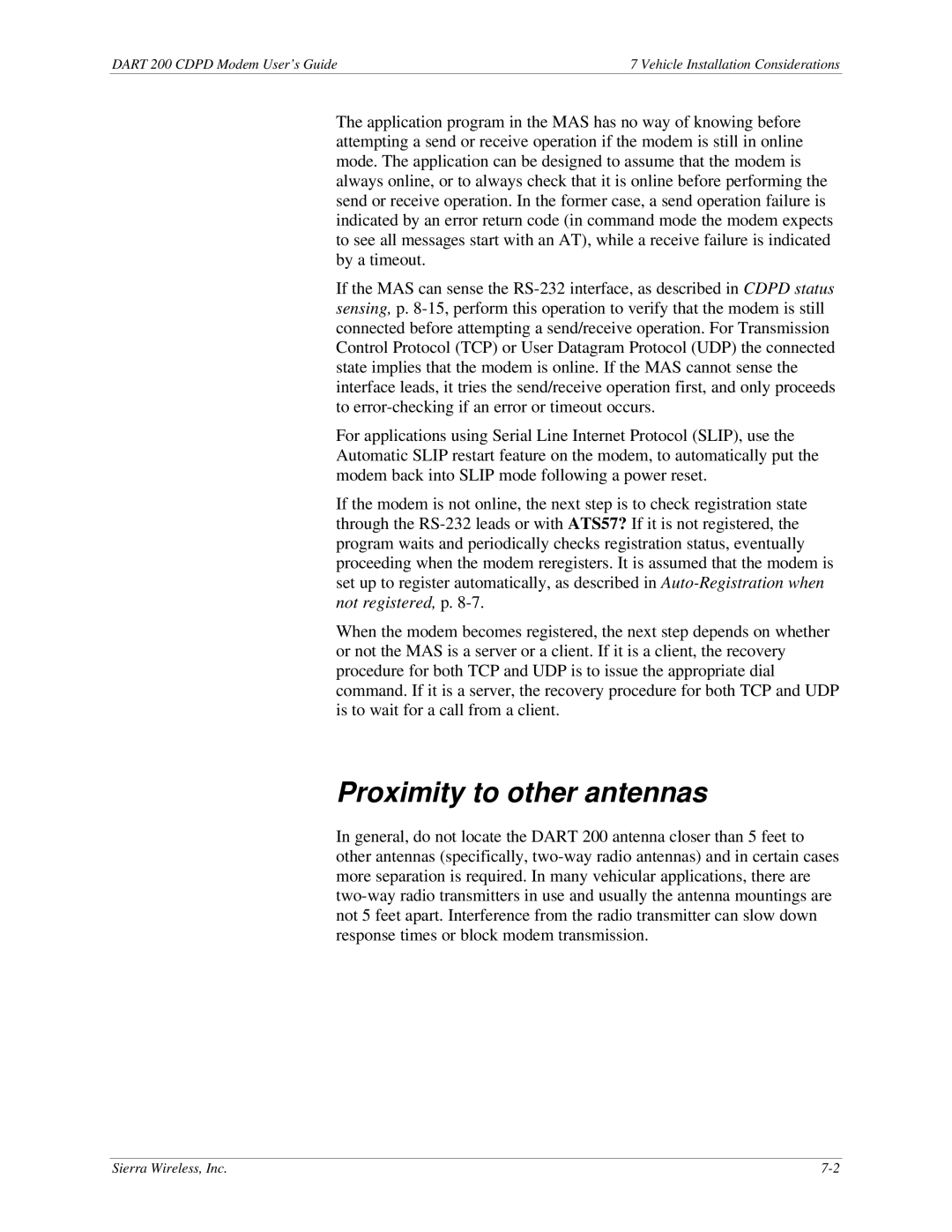DART 200 CDPD Modem User’s Guide | 7 Vehicle Installation Considerations |
The application program in the MAS has no way of knowing before attempting a send or receive operation if the modem is still in online mode. The application can be designed to assume that the modem is always online, or to always check that it is online before performing the send or receive operation. In the former case, a send operation failure is indicated by an error return code (in command mode the modem expects to see all messages start with an AT), while a receive failure is indicated by a timeout.
If the MAS can sense the
For applications using Serial Line Internet Protocol (SLIP), use the Automatic SLIP restart feature on the modem, to automatically put the modem back into SLIP mode following a power reset.
If the modem is not online, the next step is to check registration state through the
When the modem becomes registered, the next step depends on whether or not the MAS is a server or a client. If it is a client, the recovery procedure for both TCP and UDP is to issue the appropriate dial command. If it is a server, the recovery procedure for both TCP and UDP is to wait for a call from a client.
Proximity to other antennas
In general, do not locate the DART 200 antenna closer than 5 feet to other antennas (specifically,
Sierra Wireless, Inc. |
